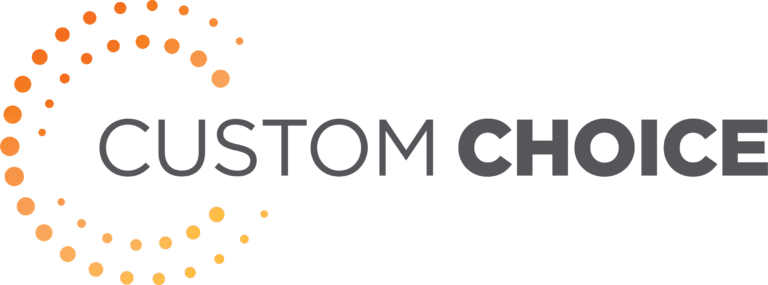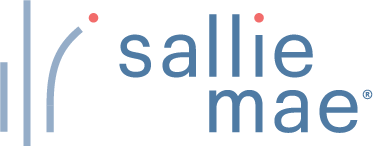Our goal is to give you the tools and confidence you need to improve your finances. Although we receive compensation from our partner lenders, whom we will always identify, all opinions are our own. Credible Operations, Inc. NMLS # 1681276, is referred to here as “Credible.”
While interest-free loans for college exist, they’re rare and highly competitive. If you’re like most students, you’ll need to borrow student loans — and pay them back with interest.
By learning about the average student loan interest rates available, you can see how your rate stacks up. Here’s what you might expect to pay in order to fund your education.
Average federal student loan interest rates
Unlike other types of lending, your credit doesn’t determine your interest rate on federal student loans. Instead, these rates are set annually by Congress. The newest rates take effect July 1 each year, and every borrower who takes out a specific kind of federal student loan pays the same rate.
Over the past decade, average federal interest rates have remained relatively low, and for many borrowers, are more affordable than what’s available on the private student loan market.
| Type of loan | Borrower | 10-year average rate |
|---|---|---|
| Direct Subsidized and Unsubsidized Loans | Undergraduate | 4.21% |
| Direct Unsubsidized Loans | Graduate or professional student | 5.78% |
| Direct PLUS Loans | Parent, graduate or professional student | 6.78% |
Federal rates today are higher than they’ve been in years, and are significantly higher than recent averages. Unfortunately, there’s no way to secure lower rates if you want a federal student loan — you’re stuck with what’s on offer.
| Type of loan | Borrower | Current rate |
|---|---|---|
| Direct Subsidized and Unsubsidized Loans | Undergraduate | 5.50% |
| Direct Unsubsidized Loans | Graduate or professional student | 7.05% |
| Direct PLUS Loans | Parent, graduate or professional student | 8.05% |
Average private student loan interest rates
Private student loan rates have much more variation than federal options, as each borrower’s rates are determined based on their individual circumstances. Private lenders set minimum and maximum rates, and where a borrower falls within that range depends on the applicant’s credit history, income, the loan repayment term, and other factors.
There’s little national data about private loan rates, but in the chart below, you can view the average prequalified rates for borrowers with credit scores of 720 or higher who used the Credible marketplace to select a lender.
Private student loan interest rates have fluctuated wildly in recent years, thanks in large part to broader economic trends.
During the COVID-19 pandemic, the Federal Reserve slashed interest rates and private student loan rates fell. But due to record-setting inflation, the Fed was prompted to begin raising rates throughout 2022 and into 2023, which has caused interest rates of all types to increase. Federal Reserve officials predict further rate increases, which could mean student loan interest rates may climb higher.
The companies in the table below are Credible’s approved partner lenders.
| Lender | Fixed Rates From (APR) | Variable Rates From (APR) |
|---|---|---|
| 4.13%+10 | 6.17%+10 | |
| ||
 | 4.48%+1 | 6.38%+ |
| ||
 | 4.11%+2,3 | 5.59%+2,3 |
| ||
 | 4.39%+ | 5.4%+ |
| ||
 | 4.56%+8 | 7.76%+8 |
| ||
 | 5.35%+ | N/A |
| ||
 | 4.50%9 – 15.49%9 | 6.37%9 – 16.70%9 |
| ||
Lowest APRs reflect autopay, loyalty, and interest-only repayment discounts where available. Prequalified rates are not an offer of credit. | 10Ascent Disclosures | 1Citizens Bank Disclosures | 2,3College Ave Disclosures | 11Custom Choice Disclosures | 7EDvestinU Disclosures | 8INvestEd Disclosures | 9Sallie Mae Disclosures | ||
How are student loan interest rates set?
Federal interest rates are set by Congress each year and based on the 10-year Treasury note, plus an add-on margin for each specific loan type. The rate is locked in for loans disbursed during a particular time period, and every borrower who gets that type of loan will pay the same rate regardless of their financial situation.
Private lenders take into account broader economic factors, including the Federal Reserve overnight bank funding rate, which is the rate banks pay to borrow from one another. Based on these factors and other indexes, they set minimum and maximum rates. The actual rate a borrower is offered within that range is determined by personal data, including:
- Credit score: Borrowers with higher scores are viewed as less risky and typically qualify for lower rates.
- Debt-to-income ratio: This compares your monthly debt payments with your earnings. Borrowers with less debt relative to their income are generally viewed as a lower risk and can be offered better rates
- Fixed- or variable-rate loans: Variable-rate loans have interest rates that fluctuate over time based on a financial index. They’re often seen as less of a risk for lenders, so the starting rate on a variable-rate loan may be lower. But the risk is higher for borrowers, who could see their rates and payments rise. Fixed rates never change over the life of the loan, and lenders may not earn as much from them as variable rates.
- Loan term: A longer loan term will generally come with higher rates, as a lender takes on more risk when offering funding over a lengthy period.
How to get the best student loan interest rate
If you’re borrowing to fund your degree and want to pay the lowest rates possible, these strategies could help:
- Shop around among multiple lenders. Every lender will offer you a different deal. Compare your private loan options to see which can offer the best terms.
- Improve your credit score. Better credit generally means a better rate. You can improve your credit score by paying your bills on time and paying down existing debt.
- Lower your debt-to-income ratio. Pay off what you owe so you have less outstanding debt and seem like a safer bet to lenders.
- Consider a cosigner. A student loan cosigner is someone with good credit who agrees to share responsibility for your debt. If a parent or other loved one will agree to cosign your debt, you can likely lock in a better rate.
FAQ
What is a high student loan interest rate?
What constitutes a high interest rate depends on your financial situation, loan details, and greater economic conditions. Compare the rate you’ve been offered with the averages listed above to see where you land.
You can also use a student loan interest calculator to estimate just how much money that rate will cost you over the life of your loan.
How do I compare student loan interest rates?
It’s often helpful to look at the annual percentage rate (APR) rather than the interest rate. A loan’s APR takes into account all costs of borrowing — including fees — while the interest rate just looks at the interest charged.
You’ll also want to be sure you’re comparing apples-to-apples. Specifically, fixed and variable rates work differently.
With a fixed-rate loan, your rate and payment will never change, so you’ll know total borrowing costs upfront. With a variable-rate loan, your rate is tied to a financial index and your loan could become more or less expensive over time. That means your monthly payments and total borrowing costs will vary based on how rates change during your repayment period.
Can you ask for a lower interest rate on student loans?
You typically can’t negotiate a lower student loan interest rate. The rate on federal student loans is set by Congress each year and is based on loan type. The rate you’re offered from a private student loan lender is determined by your financial credentials.
However, you may be able to reduce your rate on private loans by applying with a cosigner or shopping around to find a lender offering better loan terms. You might also find creative ways to lower your student loan interest rate by taking advantage of things like rate discounts.
How do I lower my student loan interest rate?
You may be able to reduce your student loan interest rate by refinancing your loans. However, you can only refinance with a private student loan lender and will need to shop around to see if you can qualify for a lower rate than you’re currently paying.
Note that refinancing federal student loans comes with added risk, as doing so permanently disqualifies you from federal benefits like forgiveness opportunities, income-driven repayment plans, and more flexible deferment and forbearance.
How will student loan rates change in 2024?
No one knows exactly how student loan rates will change over time. However, the Federal Reserve is expected to continue raising interest rates throughout 2023. This could result in a higher rate to borrow student loans over the next year or more.
See Your Rates
Checking rates will not affect your credit
Matt Carter has contributed to the reporting of this article.
Credit: Source link




